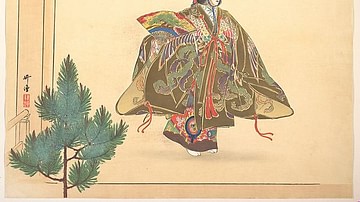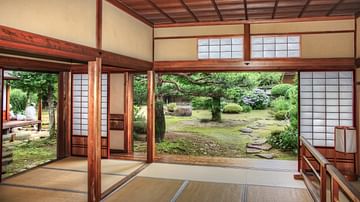Review

| Rating: | |
|---|---|
| Title: | Christ's Samurai |
| Author: | Jonathan Clements |
| Audience: | General Public |
| Difficulty: | Easy |
| Publisher: | Robinson |
| Published: | 2017 |
| Pages: | 288 |
Written for all readers, "Christ’s Samurai" introduces and elaborates upon the events that transpired during the Shimabara Rebellion, a relatively unknown piece of history and the catalyst event for the tightening of restrictions upon the spread of Christianity, leading to the inception of the "hidden Christian."
The plight of 16-year-old Jerome Amakusa, the supposed leader of the rebellion, and the rebels who accompanied him are at once instantly recognisable to contemporary readers, and yet they were alien, by design, to the populace of Edo Period Japan. The propagandistic machinations of the Tokugawa shogunate tell of a rebellion borne of a dogged devotion to a doomsday cult instead of what we now know it to be: the result of religious persecution, over-taxation, and famine. Numbering in the tens of thousands, the sheer size of the agitation surprised the shogunate, who devoted over 100,000 men to quell the fires of rebellion after receiving news that the mostly peasant force had almost captured several castles in the area. On the run, the rebels made their final stand in Hara Castle, a shabbily patched-together fortification that would see the last large-scale battle in Japan for over 200 years.
Through the lens of his trip to the Shimabara region, Clements expertly weaves his own story into that of history, providing a reading experience that is personal, emotional, and easy to digest. By continually contrasting the past with the present, Clements makes it known to the reader that the rebellion left an indelible mark upon the land, one that the region's populace is still aware of and affected by today.
In Chapter One, Clements describes the early days of Christianity in the Shimabara and Nagasaki areas. The chapter centres around the Jesuit Priest Alessandro Valignano in particular and how his leadership furthered the cause of Christianity in the region. Chapter Two divulges the details surrounding the rise and fall in Christianity's popularity and how the famous Battle of Sekigahara was a primary cause for the latter. Chapter Three documents the rule of Matsukura Shigemasa and the complexities of governing the Shimabara domain. In addition, it details the cruelties that the Christians and other unfortunate locals experienced at the hands of the daimyo (lord).
In Chapter Four, Shigemasa’s son Matsukura Katsuie is introduced as the new incumbent lord of Shimabara. The timing couldn’t be worse: terrible weather, famine, starvation, over-taxation, and prosecution had taken their toll on the populace and, as the seeds of rebellion were beginning to sprout, a young boy named Jerome Amakusa bursts onto the scene. The sparks of rebellion roar into a destroying flame in Chapter Five as the rebels rampage across the countryside, even going so far as to besiege Shimabara Castle. Quick thinking by local headsmen opposed to the revolt and the arrival of shogunate forces indicate a turning of the tide. The Battle of Hondo and the Battle of Tomioka, where the rebels attempted to seize Tomioka Castle, are vividly recounted in Chapter Six, the result being their retreat by sea to the stronghold known as Hara Castle. Chapters Seven to Nine tell of the siege of Hara Castle, from the struggles that the rebels faced when preparing the fortress for the defence to the Dutch vessel that sailed from nearby Nagasaki and fired cannonades upon the beleaguered defenders. They also recount the only traitor amongst the rebels, the composition, and positions of the attackers, as well as the skirmishes that broke out around the castle. However, as supplies dwindled and the rebels became fewer, Chapter Ten depicts the final assault that broke the defender’s back and the quashing of the revolt. Finally, Chapter Eleven chronicles the aftermath of the battle and the suppression of Christianity throughout the region, forcing those who still practiced their beliefs to become "hidden Christians."
Entertaining and informative, Clement’s renowned expertise as a writer is on full display in this evocative account of bravery against overwhelming odds. The maps, extensive notes, and bibliography are welcome additions for those who wish to delve further into the topic. Ultimately, this book is for anyone keen to learn more about niche events throughout history.
About the Reviewer
Cite This Work
APA Style
Allison, M. (2023, July 05). Christ's Samurai: The True Story of the Shimabara Rebellion. World History Encyclopedia. Retrieved from https://www.worldhistory.org/review/373/christs-samurai-the-true-story-of-the-shimabara-re/
Chicago Style
Allison, Matthew. "Christ's Samurai: The True Story of the Shimabara Rebellion." World History Encyclopedia. Last modified July 05, 2023. https://www.worldhistory.org/review/373/christs-samurai-the-true-story-of-the-shimabara-re/.
MLA Style
Allison, Matthew. "Christ's Samurai: The True Story of the Shimabara Rebellion." World History Encyclopedia. World History Encyclopedia, 05 Jul 2023. Web. 04 May 2024.



